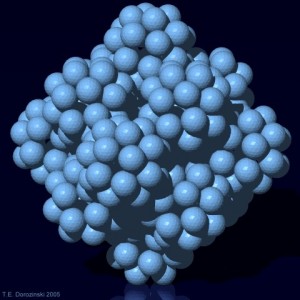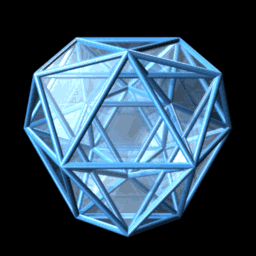Human perception is perhaps an illusion. If we understand how the illusion is created we are able to understand what is behind the veil of our senses. When people are is this state the quality of the “calculated” present lowers.
It becomes more vague. This effect “proves” that we are part of a Holographic System. In a Holograpic System the parts contain data about the Whole but when a “part of the parts” is united the quality of the “picture” goes down.
The senses are sampling data at a certain rate. The samples are combined in a “picture” of reality”. In the next step the pictures (Gestalts) are combined into a flow. The senses can be compared with a movie-camera and the brain produces the movie.
Memory is the most important reason why we don’t see what really ”is”. We are extremely biased by our experience of the past. The Gestalts trigger “old movies” that are stored in the long term memory. These old movies are integrated into the projection on our internal screen.
Our Memory is also the main reason why time is slowing down when we get older. When we are not flexible (a rigid or dominant memory) the amount of new experiences slows down and our experience of time changes accordingly.
The basic building block of experience is called the specious time. Its duration is about 1 second (about three notes of music).
The frequency of sampling can be changed. If this happens it looks like “time slows down”. Slowing down time happens when people are in a very distressful situation (an accident) or in a meditative state.
The clock that is managing the sampling process (the Zeitgeber) is synchronized with our external clock, the Sun. The Sun controls the so called Circadian Rhythm in our body.
Not only the senses are managed by a dedicated clock, The Circadian master is the conductor of a huge number of peripheral clocks, including those found in heart, liver, lung, and retina cells (Eyes).
When the circadian rhythm is destroyed organisms display many physiological problems, including infertility, high cholesterol, and conditions that resemble diabetes, obesity, and metabolic disorders.
The location of the master clock can be found in a network of neurons in the hypothalamus called the superchiasmatic nuclei, or SCN. When the connection with SCN is broken the other clocks don’t lose their rhythms. They lose synchrony and start to work alone.
The Zeitgeber of the specious moment are called thalamocortical oscillations. They connect the thalamus (The Clock) with the Cerebral Cortex (The Sensory Motor System). The oscillations are produced by neurons that fire at a rate of about 40Hz. This frequency is called the Gamma Wave. This wave is associated with higher mental activity.
With every tick of the clock a sample is taken but it takes time to “calculate” the result. Images take more time to be “calcaluted: than sound and touch. This is the reason why the time-interval of a Gestalt (a combination of sound, image, …) is much longer than 1 sec.
If something happens that is faster than 1 second (a single note) it has an effect in more than one Gestalt. The very fast “happenings” outside are taken more than once in the calculation.
The existence of the specious moment has created many philosophical problems related to time and consciousness.
The first and most important point is the question of consciousness.
If time consists of independent moments (EVENTS) why do we experience continuity, a flow of time?
The sad answer is that continuity is an illusion. There are only “nows” and a feeling of the past time is a present feeling. The past is a correlation, a similarity of moments. The “feeling” of continuity could be created because the specious moments overlap. The clock ticks but the results of the “calculation” take longer than the time-interval of the clock.
Why is time moving to the future?
Again only a sad answer is available. We are not moving! The movement of time is a construction of our cerebral cortex.
So traveling time is really no problem. The only thing that will be a problem is to detect if we are time-traveling because we are doing it all the time!
The last and probably the most important question is what is there behind the veil of our senses.
I think the answer is : Immense Beauty or the Hyper-Diamond-Feynman-Checkerboard or the Holographic Universe or framed into Group Theory: The Monster.
LINKS
Everything you want to know about thalamocortical oscillations




